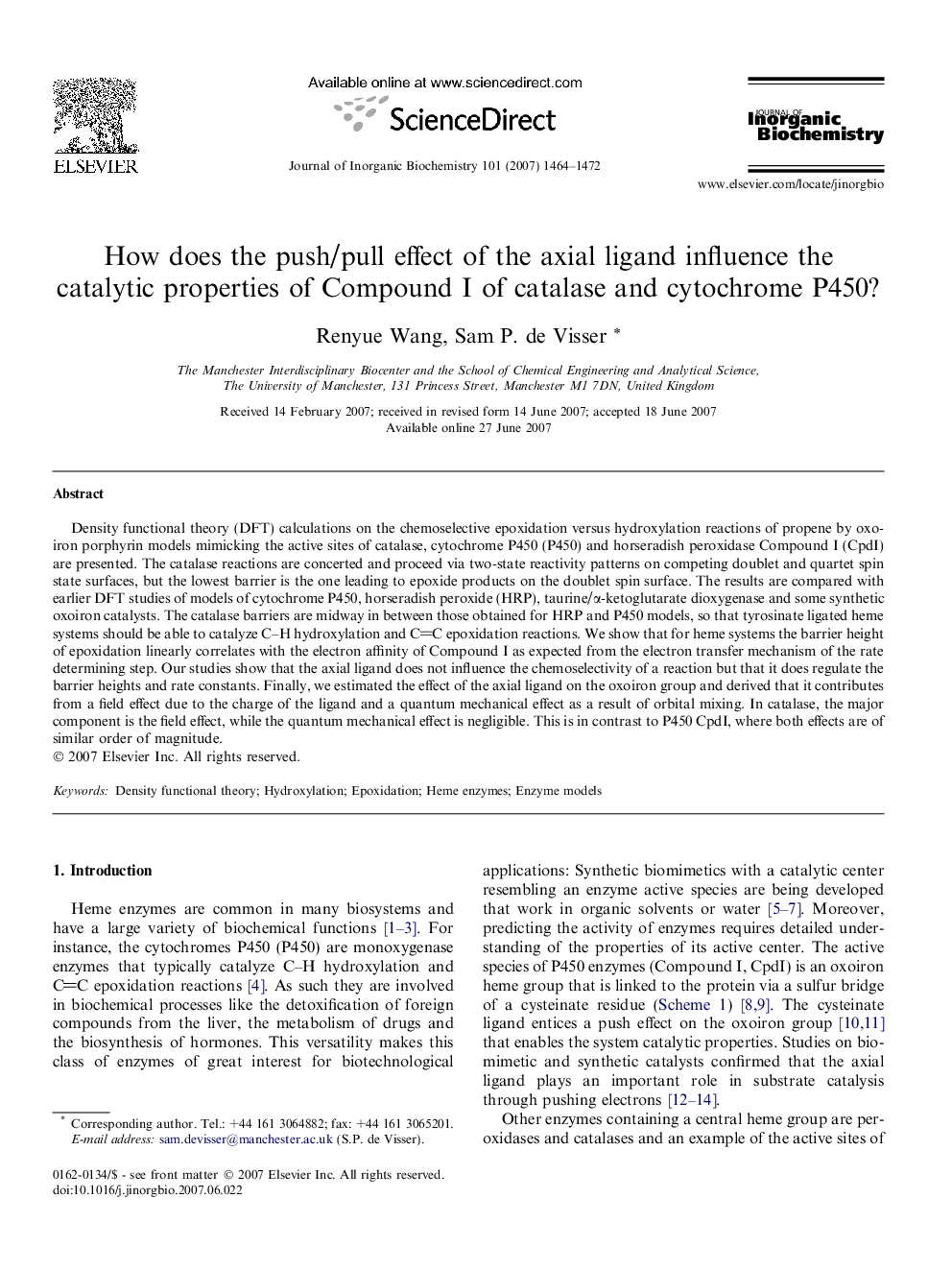| Article ID | Journal | Published Year | Pages | File Type |
|---|---|---|---|---|
| 1316735 | Journal of Inorganic Biochemistry | 2007 | 9 Pages |
Density functional theory (DFT) calculations on the chemoselective epoxidation versus hydroxylation reactions of propene by oxoiron porphyrin models mimicking the active sites of catalase, cytochrome P450 (P450) and horseradish peroxidase Compound I (CpdI) are presented. The catalase reactions are concerted and proceed via two-state reactivity patterns on competing doublet and quartet spin state surfaces, but the lowest barrier is the one leading to epoxide products on the doublet spin surface. The results are compared with earlier DFT studies of models of cytochrome P450, horseradish peroxide (HRP), taurine/α-ketoglutarate dioxygenase and some synthetic oxoiron catalysts. The catalase barriers are midway in between those obtained for HRP and P450 models, so that tyrosinate ligated heme systems should be able to catalyze C–H hydroxylation and CC epoxidation reactions. We show that for heme systems the barrier height of epoxidation linearly correlates with the electron affinity of Compound I as expected from the electron transfer mechanism of the rate determining step. Our studies show that the axial ligand does not influence the chemoselectivity of a reaction but that it does regulate the barrier heights and rate constants. Finally, we estimated the effect of the axial ligand on the oxoiron group and derived that it contributes from a field effect due to the charge of the ligand and a quantum mechanical effect as a result of orbital mixing. In catalase, the major component is the field effect, while the quantum mechanical effect is negligible. This is in contrast to P450 CpdI, where both effects are of similar order of magnitude.
